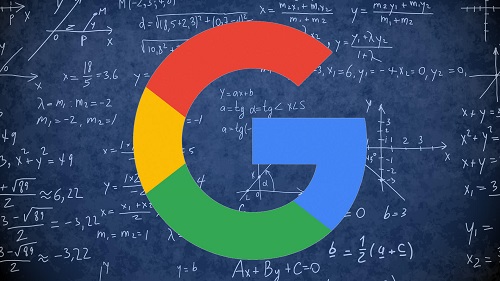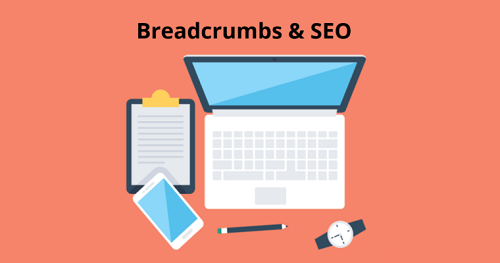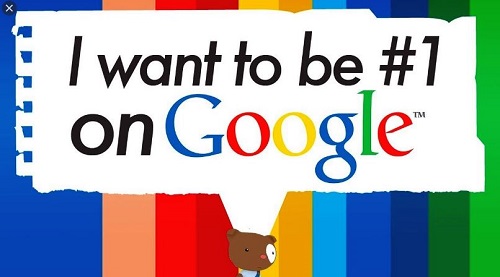How Google SEO Works For Beginner SEO Copywriters
For formality’s sake, we’ll begin by defining the terms SEO and SEO Copywriter, so we all clearly understand the fundamentals before we dive deeper. Simply put, SEO is optimizing a website. Optimizing your website according to SEO principles makes your site easy to find by search engines like Firefox, Explorer, Bing, and more importantly, Google.
An SEO Copywriter is a human being actively implementing and affecting these changes on the site. His or her primary role though is to write copy that is SEO compliant. This person writes content for the website as a whole which includes pages and blogs, all in an effort to push the site up on Googles rankings.

So How Does Google Work?
Google, the search engine we are all so familiar with and love to browse, has an index (like the index of textbooks and other material) where it stores all the pages available on the world wide web. Each page that gets indexed by Google is regarded as a separate entry with information describing what the page is about and the URL for that page. To find pages to add to its index, Google regularly crawls the web to find new pages and new information. The tool Google uses to crawl the web is called a Googlebot.
How Do I Get My Site to Rank on Google?
If you are a site owner, you might wonder well how do I get my site to rank on Google, because unfortunately not every website on the internet can be searched for and found on Google. The reality is, you cannot submit your site to Google yourself. If that were the case, you would be able to search for and find websites to your heart’s content. Google is an automated search engine which uses the Googlebot to find pages and information to index on its behalf. So, whether your website is ranking is partially out of your control. There are, however, various optimizations you can implement to increase the likelihood of your site being picked up.
You can try to make your site rank through implementing On-Page SEO strategies, and Off-Page SEO strategies. We’ll start with On-Page strategies, see what they are below.
- Always start your meta title and description with your target keyword for that page. Also, try to make these as catch as possible.
- Ensure that your focus keyword appears within the first one hundred words of your introduction.
- You should always use outbound links redirecting traffic to similar pages on your site.
- Its important that your target keyword appears clearly in the URL for that page.
- Keyword placement is essential. Make sure that these are strategically placed.
- Studies show that Google likes content with an average length of 2000 words. Try by all means to achieve this if possible.
- Optimize your image file names and titles to include the focus keyword.
Off-Page SEO refers to tangible strategies that go beyond the page or website. Here are some of our Off-Page SEO tips.
- Try to build high-quality backlinks only. This is perhaps one of the most challenging SEO strategies. Websites with more relevant backlinks will inevitably be placed above the rest.
- Try to be active on social media as often as possible and promote your content on there.
- Keep up to date with the changes that Google makes to its algorithm. You must understand these changes and move with them.
Why is My Site Not Being Picked Up?
If you are one of those whose sites are not ranking and seems to go nowhere, you’re surely wondering why that’s the case. Here are a few possible reasons:
- The site is new, and Google simply hasn’t found it yet
- The overall design of your site might be difficult for Google to navigate and analyze your content
- An error might have occurred when Google tried to crawl the site
- It could also be a policy issue where a section of your policy blocks Google from crawling your site.
- Your site may also not be well connected with other sites in the same industry as you. This means you might have to optimize your site to be more relevant to your industry and market.
How to I Get My Site to Rank on Page One?
Now, for those whose sites are being picked up – great, you are doing a good job. But it’s not enough to just be picked up by Google, the goal should be to place on the first page, if not no.1 overall for that specific keyword. There are several factors that determine where your site or a specific page on your site is being placed. Let’s briefly go through these factors below.
Sitemaps
If you are serious about wanting to rank on Google, your first point of order would be to make it easy for Google to find your content when Googlebot crawls the web as often as it does. One way of making your content more accessible to Google is through sitemaps for your website. A sitemap is a dedicated file or section on your site where you’ve indexed all your pages. Your sitemap should also be regularly updated with new content added to your site, or even old or irrelevant content that you’ve removed. Sitemaps communicate with the engines telling them about the content you have on your website.
Links
Proper internal and external linking is another method for making your content more accessible to Google. It’s helpful to always link to best-performing pages within your site (internally) and to have other domains linking to your site from their content (external linking). That way you create a spider web of interconnected pages through links, making it easy for Google to find other pages on your site from having visited just one page. This could cause more of your pages and content being indexed on Google.
Linking is great, but it’s even more important to use the correct anchor text when doing so. The anchor or link text you’ve chosen should tell the user and Google more about the page you are linking to and the type of content they can expect to find there. For example, if you have an online casino website and you are trying to link to your homepage from your online blackjack games page then its good practice to use anchor texts like “best online casinos” or “casinos online in the USA”. You should, by all means, avoid using generic anchor texts like “click here”.

Breadcrumbs
No, breadcrumbs doesn’t refer to the crumbs of freshly sliced bread. This kind of breadcrumb is connected to internal links found either at the top or bottom of a page. Breadcrumbs makes it easy for users to quickly navigate back to a previous section, or even the root page that they’ve discovered while navigating the site. These also have a precise structure where you’ll find the root link or page at the beginning of the row of connected links, with the more specific sections to the right of the connected row of links.
Google is programmed to read all types of URL’s, even the more complicated ones. But taking time to structure your URL’s precisely is good practice.
Easy Navigation
Now, once users and even Google have found your website, it’s important to have all the information structured nicely so it becomes easy for users to find what they are looking for. Every website should have a homepage or front page, which becomes the main starting point for visitors to your site. Users can then use the homepage to navigate themselves to more specific content on your site. Having breadcrumbs on your page also allows for easy navigation back and forth.
Navigation should be smooth even from other devices like your mobile phone or tablet.
URL’s
A page, or information without a URL is information that doesn’t exist. Search engines need a unique URL for every page on your website to be able to pick it up, and index it accordingly. URL’s should also be very clear on the type of content of that page and is usually split into distinct sections. See the example below. This URL tells you the name of the website, it tells you that the content is online blackjack related, but more specifically about online blackjack rules.
https://www.bestusacasinosites.com/online-blackjack/rules/
Google is programmed to be able to read all types of URL’s, even the more complicated ones. But taking time to structure your URL’s precisely is good practice.
![]()
Meta Titles & Descriptions
Once you’ve inserted a specific keyword into Googles search bar and various pages pop up, you’ll select the one with a title most specific to what you’re looking for. This is why good meta titles and descriptions are important, and why you should pay careful attention when you create them. Your meta title and description is the first thing users see when they hover over your page on Google. This is another reason why it’s important to always include your focus keyword in each of these. This way when a user inserts that exact keyword or one very similar, your page is more likely to be picked up and displayed on the search results.
Headings and Sub-headings
If the player happens to click on your page on Google and the page opens, what matters next is the actual content on your page and whether that connects with the URL for that page as well as the metas. Headings that speak to the purpose of the page is the first confirmation to Google and the user that they’ve come to the right place. Placing your focus keyword in your headings is also considered good practice.
Analyzing User Behaviour
When you’ve implemented all of these aspects into your website and your site is actually ranking, you might be curious about how your information is perceived and interacted with by the user and Google. Analyzing user behavior is an ongoing task for all site owners because its good to keep up with the progress of your site. Extension tools like Google Search Console and Google Analytics are great sources for tracking user behavior and traffic on your site. These tools have many uses and tell you everything you need to know in graphical format.
See Other SEO Guides
Meta Tags for SEO: Why HTML Metadata is Important



